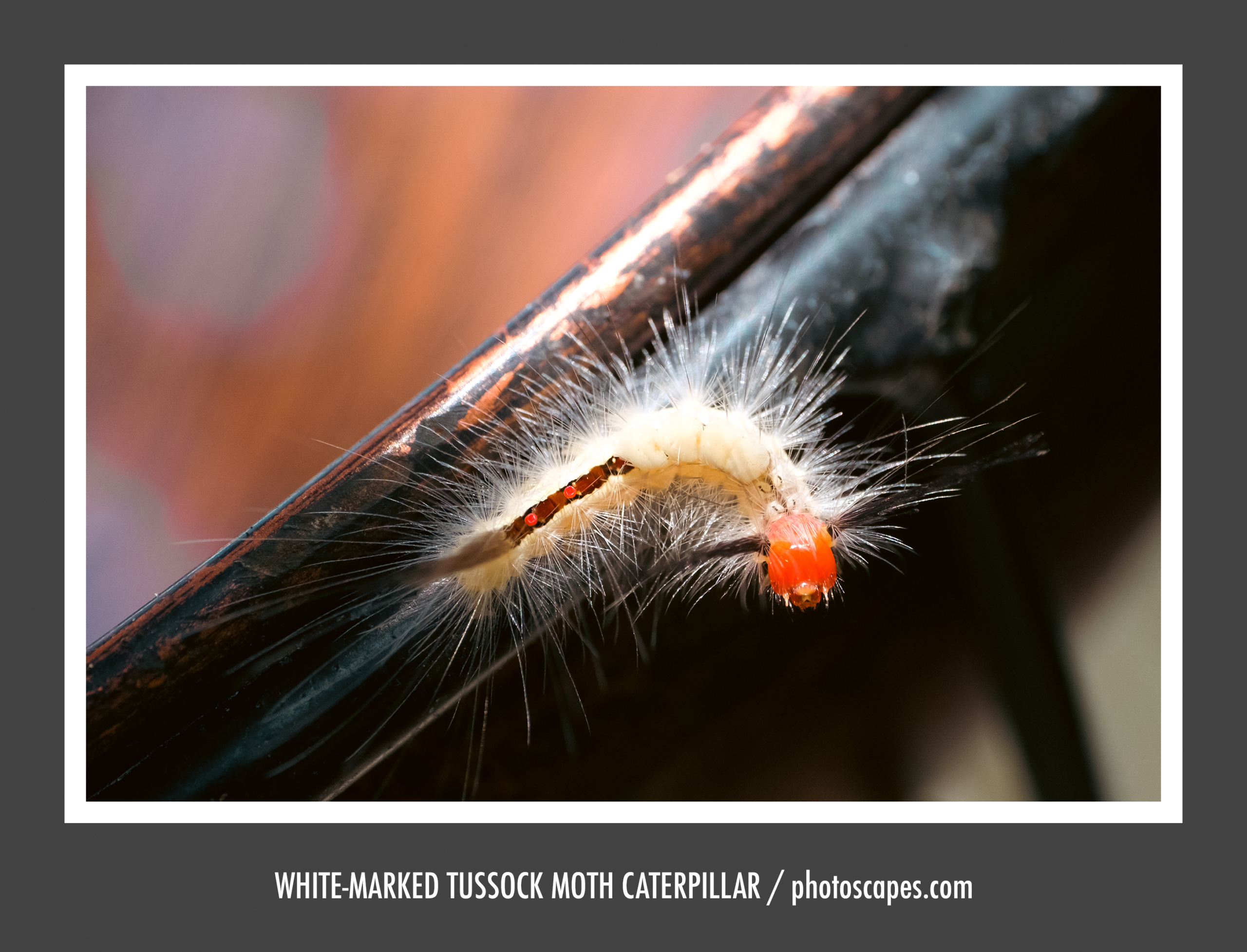Camera: Fujifilm X-Pro3 Lens: Zeiss Touit 50/2.8 Macro Digital: 26 MP [23.5×15.6] CMOS Software: Adobe Lightroom
Location: Birdbath Date: 2024 Lighting: Daylight Genre: Macro
I love how macro photography reveals a new perspective on the world, leading photographers into creative rabbit holes filled with endless visual exploration and the latest techniques. Although I’ve performed macro work with gear-intensive setups, I’m excited to share the behind-the-lens for this image due to its ease of capture regarding macro gear and technique.
The Scene
While refilling the birdbath on my porch railing and checking the nearby feeders, I noticed a striking caterpillar resting on the rim of the copper bowl. Its bright colors and hairy texture immediately caught my attention, leaving me momentarily in awe as I tried to identify this unusual creature. Recognizing its uniqueness, I quickly dashed to my studio, grabbed my X-Pro3 camera and Zeiss Touit 50/2.8 macro lens from the copy stand, and hurried back outside. With no time to set up a tripod or use typical macro accessories, I relied on a high ISO, a steady hand, and the lens’s sharpness and depth of field to capture the moment. It was a true test of the gear’s capabilities!
The Challenge
The challenge arose with handheld shooting (no IBIS), selective focus, and the need for a high ISO. The caterpillar moved with purpose, not as erratically as a bumblebee but in constant motion. Fortunately, the circular rim of the copper birdbath worked to my advantage as it made its way along the edge—the EXIF data for the shot: 1/400 sec at f/5.6, ISO 1600. Thanks to advancements in camera sensor technology, shooting at ISO 1600 no longer requires special noise-reduction plugins in post-processing—just my usual workflow in Lightroom.
Crafting the Image
I positioned myself just inches from the caterpillar, leaning over the copper rim of the birdbath to capture the shot. With macro lenses requiring such close proximity—often just millimeters away—the caterpillar’s constant movement was a real challenge. I started anticipating its path, pre-focusing on spots where I expected it to crawl. Once I felt confident in the composition, I used a high ISO and an aperture of f/5.6 to tie everything together.
The weather worked in my favor—calm conditions with no gusts of wind and a soft, overcast sky. Although it was afternoon, the porch roof blocked most of the sunlight, providing soft, even diffused light. This presented a perfect opportunity to test the lens as I carefully selected my focus points, relying on autofocus for its speed, and used the camera’s slowest continuous drive mode to capture the moment.
This Zeiss Touit 50/2.8 macro lens has primarily been a studio tool for me, mounted on a copy stand for product work and graphic creation. Most of my macro photography in recent years has been done with either the Sigma SD1-M and its 70mm macro lens or the ALPA TC paired with a Schneider 120 macro lens and Hasselblad digital back. Unlike photographing insects or small creatures, my usual focus with macro work has been on abstract art—using selective focus to explore glass shards, liquids, and other tiny objects that reveal captivating imagery at the macro level.
Closing Thoughts
Macro photography continues to inspire me, offering a gateway to see the extraordinary in the ordinary. It’s a genre where patience, curiosity, and creativity converge, rewarding those who look closer with moments of wonder and discovery. Whether I’m capturing intricate details in abstract art or, as in this case, the surprising beauty of a living subject, each image serves as a reminder of the small marvels that often go unnoticed.
This particular experience reinforced the value of being both prepared and adaptable, as sometimes the most captivating shots occur spontaneously, without a tripod or elaborate setup. It’s a testament to how far technology has come and how accessible macro photography can be for those willing to experiment.
Suppose you’ve ever felt drawn to exploring the miniature universe around you. In that case, I encourage you to dive in—whether it’s through Don Komarechka’s insightful book or simply by picking up your camera and starting small. There’s always something new to discover, and the journey is every bit as rewarding as the final image.
Happy shooting, and may the tiny wonders of the world inspire your next creative adventure.

